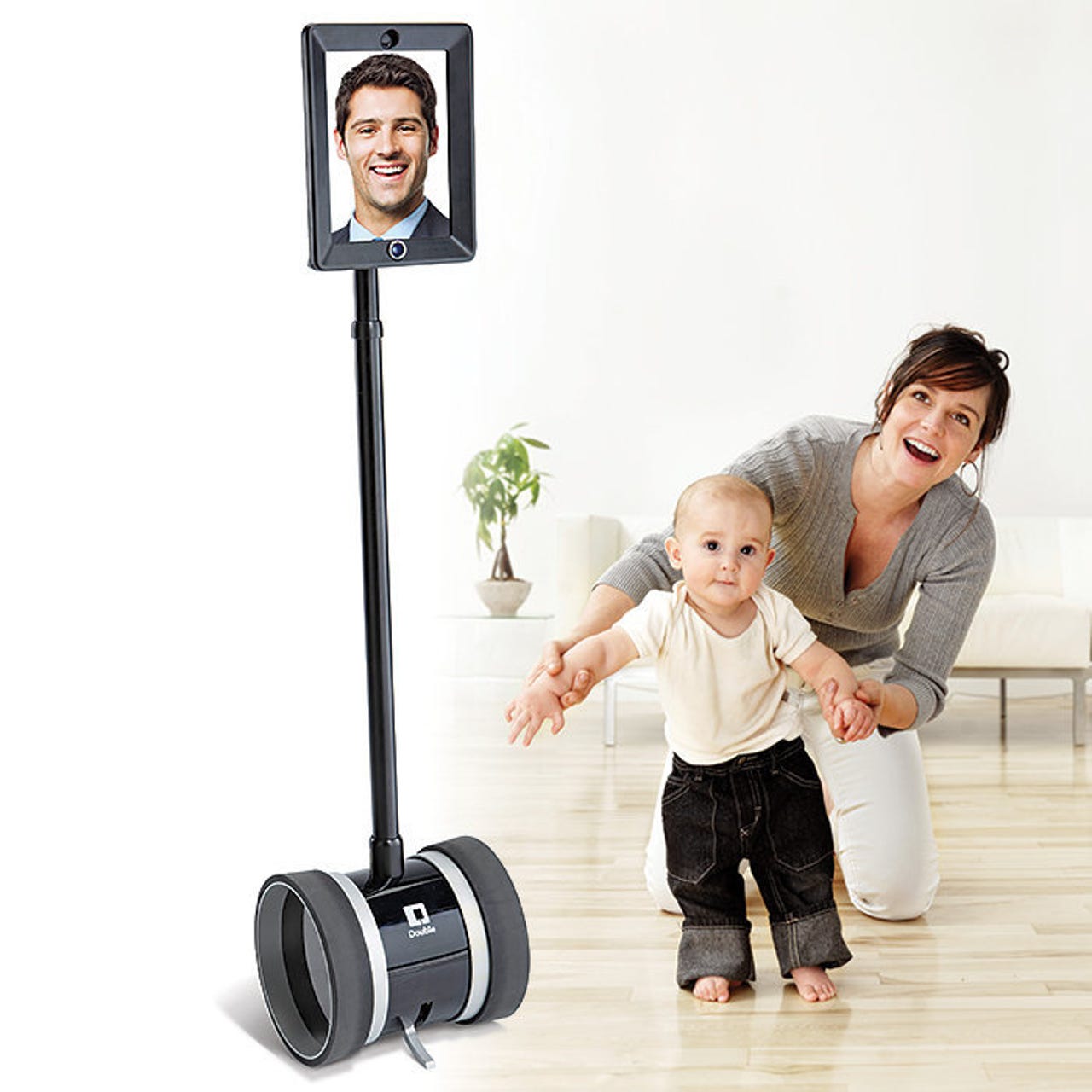An inexpensive robot may be the perfect solution for your help desk


You get a phone call. A co-worker has a problem. You're patient--no, you're zen. You ask for some basic info. You explain how to get that information. Information is not forthcoming. An hour later, you're still on the damn phone. Half your day is shot.
Robotics
Anyone who's worked a help desk or tech support knows how it goes, and anyone in IT is likely to have a long call sheet of people who need a helping hand. If your office is small it's probably no big deal to walk down the hall and look over a shoulder. But what if you work on a campus or in a large building? Better yet, what if you've landed the dream gig and work remotely?
Telepresence robots, which have been something of a novelty over the last few years, are now starting to creep into general use. Across most sectors there's a growing segment of contract workers and freelancers who can't be in the office full time, and offices are seeing the value of poaching talent across time zones and letting their salaried employees work off-site at least part of the time.
Thanks to the cloud and the collaboration tools it's spawned, remote workers are able to interact with co-workers and participate virtually like never before. But let's face it: Conference calls are a nightmare, video conferencing via tablet or desktop is great one-on-one but a pain for groups, and there's no substitute for an in-person meeting.
Telepresence bots offer a surprisingly adequate alternative. I recently got a chance to try Double Robotics' newest Double telepresence bot, which the company announced at CES 2016. The new version removes some of the rough edges of the old Double. A lateral stabilizing system allows it to go over thresholds and wires easier, a speed boost setting allows it to jet down hallways, and a wider camera gives the user a better sense of perspective.
During my test drive I steered the robot around a room, looked at my virtual self in a mirror, and conducted an interview with Double Robotics co-founder and CEO David Cann. It takes some getting used to, but the mobility of the Double gives you a completely different experience than traditional video conferencing.
"We push our customers to use it just as if you're going to the office regularly," Cann tells me. "Leave it on all day, have it running in the background on your laptop. You can hang out, and if something happens, you might overhear it, roll over, add your two cents. You can work at home and still be there for serendipitous conversations."
The experience using the improved Double, which costs $2499 for the base unit (tablet not included), left me wondering if it wasn't the perfect solution for help desks and large IT departments. Turns out that's one of the most promising use cases in Double's arsenal.
Revolve Robotics makes Kubi, an inexpensive robotic cradle for a tablet.
"Because IT tends to need to be in a whole bunch of different places at once," explains Cann, "one application we're starting to see is that IT departments will deploy Doubles in different parts of their campus. IT will call into the robot and drive over to the person who needs assistance. Instead of saying, 'can you open up Skype,' and then getting caught up teaching them to operate their web cam, this solution doesn't require the person who needs help to anything. They can just talk, and the IT professional is right there looking over their shoulder. It's a huge time saver."
In the case of a distributed workforce, which is increasingly common, a manager-on-call might call into a telepresence bot on site to assist a co-worker from anywhere in the world. Indeed, earlier this year I interviewed Peter Hirst, Associate Dean for Executive Education at MIT Sloan School of Management, who confessed to having dialed in to Double from 20,000 feet using an airline's shoddy WiFi connection.
Ahem ... pretty sure that's a violation of the airline's terms of service, Mr. Hirst.
For more info about the Double 2 and its capabilities, check out Double's CES announcement here. A company called Revolve Robotics makes another inexpensive telepresence solution that's worth a look if mobility isn't necessary for your virtually present self.